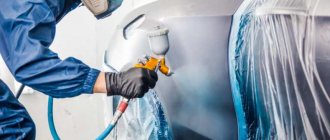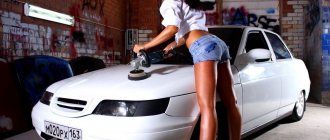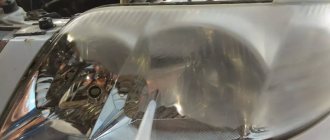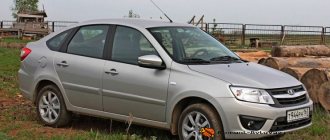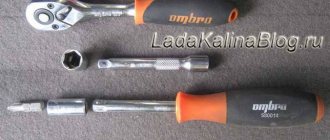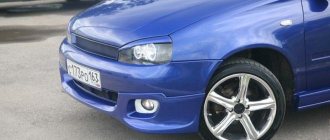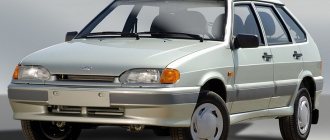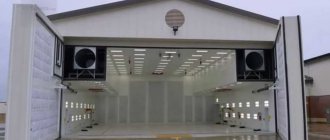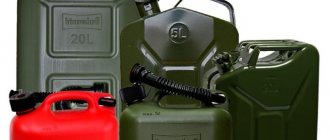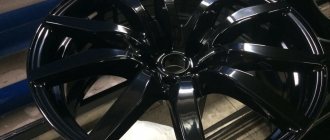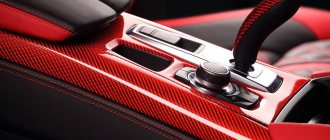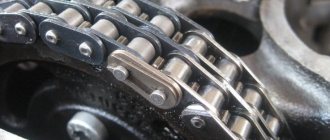Even experienced drivers are not always able to foresee situations that can lead to damage to the car's bumper. One of the common violations of the integrity of the coating is cracks and chips of the part. Changes make further operation of the machine difficult and affect the appearance. Service station specialists will help you repair the damage. However, in order to save money, you can solve this issue yourself by following certain recommendations using special tools.
Achieving the ideal appearance of a bumper is difficult without the use of putty. Depending on the surface area to be repaired, work is divided into:
- local;
- full.
In the first case, the part can not be removed from the car and the coating can be restored in place. In case of large amounts of damage, the front part is removed for this purpose. To achieve quality results.
Technical characteristics and composition
Bumper putty differs from other types of mixtures in its properties. The technical characteristics are as follows:
- increased adhesion of material to plastic;
- resistance to mechanical damage;
- lightweight grinding;
- elasticity of the solution.
Manufacturers produce special formulations that consist of two components.
- Base - which contains polyester resins, dispersed fillers and pigments.
- Activator - promoting hardening of the solution.
The size of the base filler fraction determines the type of putty; the pigment allows you to bring the color of the mixture as close as possible to the material that is being processed.
Calculation of putty per 1 m2
The required amount of putty is determined by the amount of work required to eliminate defects. The average weight of the substance ranges from 200 to 1800 grams. Therefore, the manufacturer produces mixtures in such containers. The exact quantity is indicated on the packaging that accompanies the can of putty.
15th position. Body Bumper Soft - polyester bumper putty
This polyester car bumper putty consists of 2 components. The plastic composition effectively eliminates various surface defects of the car body (scratches, unevenness) due to its high filling ability. The finished coating is quite durable, non-porous and easy to sand. The putty is suitable for drying using an infrared lamp.
Body Bumper Soft - polyester bumper putty
| Characteristics | |
| Blend color | White |
| Type | Auto putty |
| Chem. compound | Polyester |
| Minimum application temperature | +10 °C |
| A country | Greece |
BODY SOFT putty can be applied to polymer materials (various types of plastic), fiberglass, wood and factory paintwork. The composition cannot be used on reactive soils or nitrocellulose materials.
Application on thermoplastic materials is unacceptable: in this case, before application, the surface of the part is completely cleaned down to the metal base. The mixture is prepared in the ratio: 2% hardener to 100% putty.
Peculiarities
Elastic putties are resistant to vibration and mechanical stress due to their composition and adhesive properties. In order for the coating on the bumper to last as long as possible, it is necessary to properly dilute the chemical compounds. It is important to maintain the proportion when making the solution. Mix the product in the following ratio:
- 5% is the hardener;
- 95% is the total mass of the main substance.
The main condition when creating putty is the quick connection of the components and application to the surface, taking into account the high rate of hardening of the solution. The layer hardens within 5 minutes, so you need to have time to distribute the mixture on the bumper.
2nd position. Putty for plastic GREEN LINE PLASTIC PUTTY
This elastic polyester-based putty is recommended for DIY and professional body repairs. Adheres well to most plastics.
Putty for plastic GREEN LINE PLASTIC PUTTY
| Characteristics | |
| Blend color | Dark grey |
| Type | Auto putty |
| Chem. compound | Polyester |
| Number of components | 2 |
| Minimum application temperature | +10 °C |
| A country | Russia |
Before application, you need to warm up the part at +60 °C, degrease it with anti-silicone, treat it with abrasive and clean it again. The components must be combined in the following ratio: 100 parts putty and 2 parts hardener. Mix the composition thoroughly, but not quickly (to avoid the formation of air bubbles). The pot life of the mixture is 3-4 minutes.
At +20 °C, layers of putty harden in 20 minutes. Lowering the temperature shortens the curing time. Before painting, the finished coating must be sanded and coated with acrylic primer.
Tool selection
High-quality bumper putty requires careful preparation. To do this, you need to take care in advance of purchasing additional materials that will be needed for the work. The necessary tools are presented:
- grinding machine;
- soldering iron with a power of about 300 W with a wide flat tip;
- sandpaper with varying degrees of grit for initial and final sanding (from P 80 to P 1200);
- a wooden block with a mount for sandpaper;
- solvent or white spirit;
- polishing paste;
- putty;
- primer solution exclusively for bumper treatment;
- paint;
- varnish;
- with a brush or spray gun.
Important! Additionally, you should prepare special change of clothing, a mask and a respirator to prevent small dust particles from entering the respiratory tract.
Types of putty mixtures
Manufacturers produce putties for various purposes. Bumper repair includes leveling deep and minor surface defects. Therefore, there are such basic types of coverage.
- Filling - has a coarse-grained structure.
- Finishing - contains fine-grained filler.
- Universal - combines the properties of the first two options.
The first option allows you to eliminate deep blockages and deformations. The latter serves as a finishing layer or removes minor irregularities, making the part smooth and durable, easy to apply and quickly sanded. Universal putties are convenient to use because they do not require additional costs for purchasing several types of mixtures. Most modern car models have a plastic bumper. Therefore, the use of putty is obvious. However, for some outdated models, other mixture options are relevant.
Putty options depending on the source material
The choice of filling putty depends on the source material of the car part. The mixtures are presented in the following types.
- Reinforced with fiberglass - the material is well suited if it is necessary to repair significant deformation of a part or if it is rusty. The mixture has high reinforcing properties, is durable and densely fills defects. Indispensable for through cracks on metal surfaces. However, it is not recommended for use on large areas, since the putty is not elastic enough and is not resistant to vibrations.
- Reinforced with aluminum - the mixture is used to process parts that are exposed to high and low temperatures. The composition includes metal powder, which has a coefficient of thermal expansion close to that of metal. Therefore, the putty can withstand sudden temperature changes. It has a fine-grained structure and does not shrink significantly after application to the coating. Given the longer drying period compared to other solutions, it can be applied to large areas.
- Lightweight - due to the content of hollow glass beads, the putty does not weigh down the machine parts during processing. Easy to process. Experts recommend using the suspension when repairing large surfaces - bumper, hood, panels.
- Classic - have a medium-grained structure. They adhere well to surfaces, including fiberglass coatings, without additional sanding. However, they definitely require finishing material.
- Finishing mixtures - used for final work after closing large defects. They have a fine-grained composition that makes the surface smooth without defects. Most often they are white or black and are highly elastic.
- Liquid - released in the form of a spray. Convenient to use, especially for large surfaces. Dries quickly, creating a thin, durable layer. Easy to sand.
- For plastic, special mixtures are used that have high adhesion to plastic.
The use of fiberglass in the repair of a plastic bumper
If there are cracks or deformations in the car, they must be eliminated. Some craftsmen use fiberglass with epoxy resin and putty with fiberglass for these purposes. However, experienced specialists strongly recommend avoiding such procedures. They don't follow the right technology. A bumper repaired in this way may, under unfavorable conditions or an impact, crack again at a weak point, especially during mechanical impact or impact, which will require repeated repair of the fault.
The ideal places for applying fiberglass-based putty are pillars, thresholds, and arches, which bear a significant force load.
The work should be performed using special rods made of a material similar in composition to the bumper being repaired. Deformations are corrected with a hot hairdryer. Further work is carried out sequentially with the obligatory use of elastic putty.
7th position. Car Fit Plastic putty on plastic
This putty for plastic car bumpers is characterized by quick drying and ease of sanding. The kit includes a spatula for quick and even application of the product. The final coating is thin, but remains durable and flexible even at low temperatures.
Car Fit Plastic putty on plastic
| Characteristics | |
| Blend color | White |
| Type | Auto putty |
| Chem. compound | Polyester |
| Number of components | 2 |
| Minimum application temperature | +10 °C |
| A country | Germany |
Dried putty can be sanded dry by hand or with a sander. Preliminary application of primers is not required: it is enough to treat the surface with an abrasive (to remove gloss) and anti-silicone (to remove traces of oils).
The putty surface can be painted, but subject to prior priming with an acrylic-based composition. Layers (up to 2 mm thick) dry in air in 20 minutes. The coating can withstand mechanical and physical stress. The putty is applicable for professional paint repair of cars.
Preparatory work
Do-it-yourself bumper repair involves preparatory work, soldering, putty, priming and painting. Puttying is carried out only on a clean surface. Therefore, before performing them, the car should be washed using special cleaning products. After this, dry the car, paying attention to problem areas. After this, the surface is degreased using a solvent or white spirit. The old paintwork must be cleaned and sanded. If this is not done, the new coating will deteriorate over time with the appearance of defects and cracks.
Soldering the bumper
If a crack is found, soldering will be required. You can do it yourself by following certain instructions. The best option is seam soldering of plastic. This type of repair includes the following steps.
- First, the part is fixed with a clamp.
- Make a hole with a drill at the end of the crack.
- First of all, the parts are connected from the inside to determine the properties of the material and eliminate the possibility of defects appearing on the visible surface.
- They grab the edges of the plastic in the crack area, moving gradually in one direction. The tack size is 10 - 15 cm. Then full soldering is performed.
- Reinforce the bumper using stapler staples step by step, keeping a distance of 2 cm between them. Attention! The legs of the staples should first be shortened to avoid piercing the material through.
- Next, solder the staples and straighten them along the seam.
Puttying and painting the bumper
Bumper putty is an important stage of restoration work. It is necessary in order to eliminate small and large defects, irregularities, and make the surface smooth. This step is mandatory before painting. If this is not done, the varnish will quickly crack and peel off. The work is performed in the following sequence.
- Determine the types of starting and finishing putty that are needed for the coating.
- After preparing the mixture, quickly apply the mixture to the area of defects and distribute evenly over the surface before it has time to harden. First use the base composition, and then the finishing one.
- Each layer is carefully sanded using sandpaper or a sander. After the final application of the finish, rub the bumper with soft sandpaper with a grit of P 180 - P 220.
- Matting is done with abrasive P 220.
- After blowing, the bumper is coated with a primer. For these purposes, the best option is a two-component acrylic primer. It is undesirable to allow the solution to leak during processing. The composition is applied several times, waiting for the previous primer layer to dry, after which they move on to the final stage of repair.
Important! Complete polymerization occurs within 24 hours. You can use an infrared lamp, which can reduce the hardening process to 3 hours.
- After grinding, the surface is blown and degreased.
- The paint is applied in 2 - 3 layers, each of which must be allowed to harden well. Drying should be at least 10 minutes.
- The final stage is varnishing in 2 layers with intermediate drying.
Rating of the TOP 15 best putties for cars for 2021-2022
| Place | Name | Price |
| TOP 3 best putties for cars by price/quality for 2021-2022 | ||
| 1 | NOVOL UNI 0.5 kg | Find out the price |
| 2 | HB BODY PRO F250 Bodyfiber 0.25 kg | Find out the price |
| 3 | NOVOL PLUS 720 yellow 1 kg | Find out the price |
| TOP 3 best putties for bumpers | ||
| 1 | HB BODY PRO F222 Bampersoft 0.25 kg | Find out the price |
| 2 | NOVOL BUMPER FIX 0.2 kg | Find out the price |
| 3 | HB BODY PRO F220 Bodyfine 0.25 kg | Find out the price |
| TOP 3 best putties for cars against rust | ||
| 1 | NOVOL ALU 0.25 kg | Find out the price |
| 2 | HB BODY PRO F211 Bodysoft 0.25 kg | Find out the price |
| 3 | CHAMALEON 504 0.25 kg | Find out the price |
| TOP 3 best one-component putties for cars | ||
| 1 | HB BODY PRO P980 Nitro green 0.15 kg | Find out the price |
| 2 | NOVOL 1K red 100 ml | Find out the price |
| 3 | HB BODY Nitrosoft 241 0.75 kg | Find out the price |
| TOP 3 best two-component putties for cars | ||
| 1 | NOVOL FIBER 0.6 kg | Find out the price |
| 2 | HB BODY PRO F220 Bodyfine 0.25 kg | Find out the price |
| 3 | UNIVERSAL universal JETAPRO 5540/0.5 kg | Find out the price |
Grinding stage
Before covering with putty and further painting the bumper, the plastic is sanded. To do this, resort to using a grinding machine. The optimal wheel option for equipment No. 240. It is necessary to carefully handle chips and irregularities. In hard-to-reach places, smooth the surface manually. Use sandpaper P 120. Sand the seam very carefully so as not to damage it. After sanding, the bumper is blown to remove dust that has settled on the surface. In this way, hidden cracks can be detected. If such a defect is discovered, soldering should be done. If red spots appear during sanding, this indicates problem areas that require re-processing.
Tips and tricks
In order to achieve a good result, experts advise following the following rules.
- All stages of work must be followed.
- Maintain time intervals for drying layers of putty and paints.
- Purchase bumper products from trusted manufacturers in certified product stores.
- Select a putty that matches the material from which the bumper is made.
Proper repairs will ensure a high-quality and beautiful coating that will last for many years.
Which company should you choose?
There are quite a lot of manufacturers of car putties, but in 2021-2022, users and experts have identified several manufacturers whose products are of the highest quality.
The ranking of the best manufacturers of automotive putties included NOVOL, HB BODY PRO, CHAMALEON and UNIVERSAL. We included the most successful products from these manufacturers in the rating.
